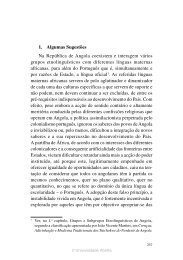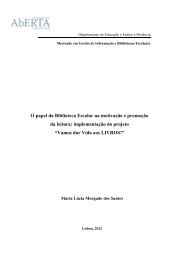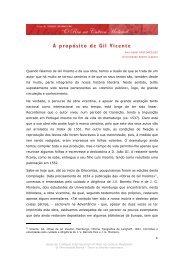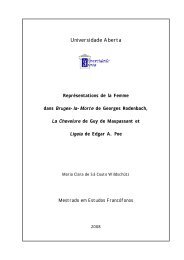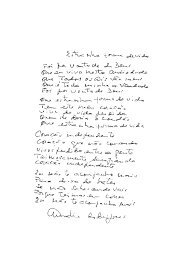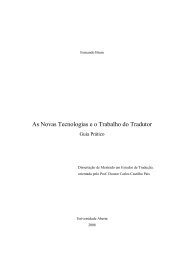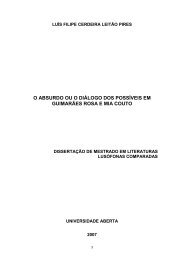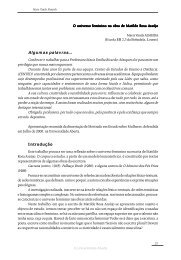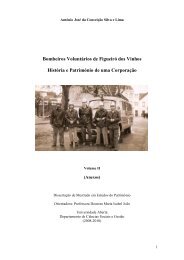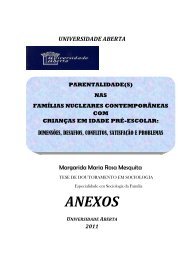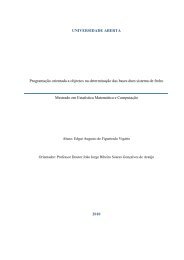Diálogos Transdisciplinares em Girl with a Pearl Earring: a Arte ...
Diálogos Transdisciplinares em Girl with a Pearl Earring: a Arte ...
Diálogos Transdisciplinares em Girl with a Pearl Earring: a Arte ...
You also want an ePaper? Increase the reach of your titles
YUMPU automatically turns print PDFs into web optimized ePapers that Google loves.
“ ... they did not even pay their bill. They still owed us fifteen guilders. Pieter<br />
never asked th<strong>em</strong> for it. ‘It’s the price I have paid for you,’ he sometimes teased.<br />
‘Now I know what a maid is worth’” (234).<br />
Guarda os cinco florins restantes, onde não poderiam ser descobertos, não iria<br />
gastá-los. Finalmente ela era uma mulher livre! Seu último pensamento é: "Pieter<br />
would be pleased <strong>with</strong> the rest of the coins, the debt now settled. I would not have<br />
cost him anything. A maid came free" (248).<br />
Uma das estratégias narrativas mais características da literatura pós-moderna é a<br />
apropriação, releitura, e re-escritura de textos canônicos da literatura e da arte<br />
ocidental. Essa estratégia narrativa é de especial importância para o<br />
estabelecimento de uma literatura f<strong>em</strong>inina de sobrevivência, de resistência, de<br />
subversão, e de imensa criatividade pois desafia os pressupostos e os vieses de<br />
cânones artísticos e literárias, estabelecidos a partir de critérios heg<strong>em</strong>ônicos que<br />
privilegiam a cultura dominante, de cunho patriarcal.<br />
A coisa mais impressionante sobre este romance é que ao mesmo t<strong>em</strong>po que é<br />
uma história absorvente, ela também faz uma interseção entre os dois<br />
predominantes pilares da teoria f<strong>em</strong>inista. O discurso da “imag<strong>em</strong> da mulher”,<br />
que é um dos fundamentos básicos dos estudos sobre a mulher como nós<br />
conhec<strong>em</strong>os hoje, aqui se releciona com o t<strong>em</strong>a apresentada da “mulher como<br />
artista”. Não é necessariamente curioso, pois estes dois pilares do discurso<br />
f<strong>em</strong>inista trata a mulher como objetos e sujeitos. Precisamente o que Chevalier faz<br />
no seu romance é transformar a mulher enquanto objeto <strong>em</strong> sujeito: “... But he<br />
was my master.I was meant to do as he said” (60). Ironicamente, é dada a Griet<br />
uma identidade através da qual supõe-se um papel ativo no objeto da pintura.<br />
Esta não é a história de uma f<strong>em</strong>inista antes do seu t<strong>em</strong>po, pois Chevalier segundo<br />
o artigo de Cibelli:<br />
(...) does not have the character overturn f<strong>em</strong>ale stereotypes or transcend her<br />
social class. Chevalier discuses Griet’s nascent interest in art <strong>with</strong>out making her



